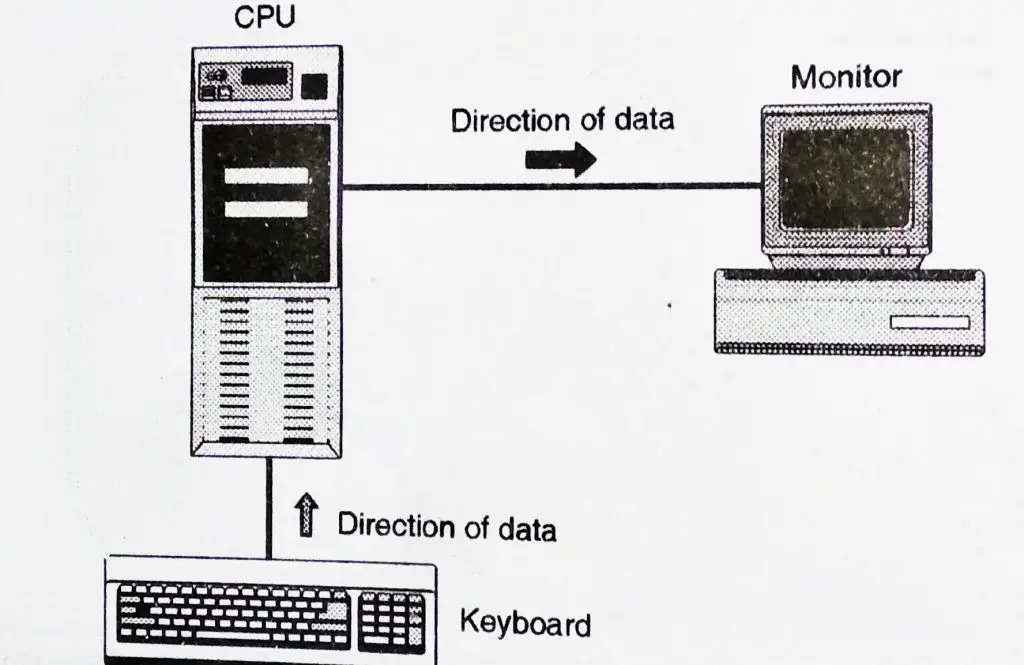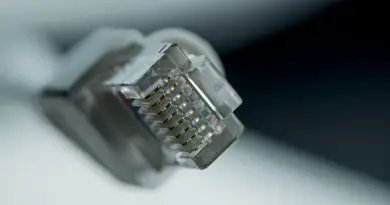Computer Network – Types of Communication (Simplex, Half Duplex and Full Duplex)
As we already saw in my previous post, any communication network basically consists of links and nodes in a variety of different configurations(topology) . So now we may proceed further to have a glimpse of different forms of communication(types of communication) that can occur between multiple devices connected. A link is a communications pathway that transfers data from one device to another.
For simplicity, you can imagine any link as a line drawn between two points. For communication to take place, two devices must be connected in some way to the same link at the same time. There are mainly two possible types of connections i.e. point-to-point and multipoint .
Communication Network Basic Components
We should first understand what are the basic parts involves in establishing successful communication between multiple parties. So following are the main components of a communication network:
Message : The message is the information (data) which is to be communicated. Popular forms of information simply includes text, numbers, pictures, audio, and video.
Sender : The sender is the device (host) that sends the data message. It can be a computer, workstation, telephone handset or a video camera, and so on.
The receiver is the device (host) that receives the message. It can be a computer, workstation, telephone handset or television, and so on.
Transmission medium : The transmission medium is simply the physical path by which a message travels from sender to receiver. Some examples of transmission media are twisted-pair wire, coaxial cable, fiber-optic cable, and radio waves.
Protocol : A protocol is basically the set of rules that govern data communications. It represents an agreement between the communicating devices. Without a protocol, two devices may be connected but not communicating, just as a person speaking Chinese cannot be understood by a person who speaks only Japanese.
Types of Communication
Based on whether the given communication system communicates only in one direction only or in both the directions, the communication system is classified as :
- Simplex systems.
- Half duplex systems.
- Full duplex systems.
Simplex Communication
In this system the information is communicated in only one direction.For example, the radio or TV casting systems that can only transmit. They cannot receive.
Only one of the two devices on a link can able to transmit, the other can only receive.
In the data communication system the simplex communication takes place as shown in fig.
The communication from CPU to monitor or keyboard to CPU is unidirectional.
Keyboard and traditional monitors are example of Simplex devices.
The keyboard can only able to introduce input and the monitor can only accept output. The simplex mode can use the entire capacity of the channel to send the data in one direction.

Half Duplex Communication:
These systems are bi-directional i.e. they can transmit as well as receive but not simultaneously.
At any given time these systems can either transmit or receive for example a trans receiver or walky talky set. Thus the direction of communication will keep changing itself.
The half-duplex mode is like a basic one-lane road with traffic allowed in both directions. When cars are traveling in only one direction, cars going the other way must wait
A data communication system working in the half-duplex mode is shown in fig.
Each station can transmit and receive, but not at the same time . When one device is ending the other one is receiving and vice versa.
In a half-duplex transmission, the entire capacity of a channel is used and taken over by whichever of the two devices is transmitting at the time
In half-duplex transmission, the entire capacity of the channel is utilized by the transmitting (sending) system.
The half-duplex mode is used in cases where there is no need for communication in both directions at the same time, the entire capacity of the channel can be utilized in each direction.

Full Duplex Communication:
These are truly bi-directional systems as they basically allow the communication to take place in both directions simultaneously. The full-duplex mode is like the two-way street with traffic flowing in both directions at the same time
These systems can transmit as well as receive simultaneously, for example, the telephone system.
A full-duplex data communication system is shown in fig. Each station can transmit and receive simultaneously.
This sharing can occur in two ways: Either the link must contain two physically separate transmission paths, one for sending and the other for receiving, or the capacity of the channel is divided between the signals traveling in both directions.
In full-duplex mode, signals going in either direction sharing the full capacity of link.
The link may contain two physically separate transmission paths one for sending and another for receiving.
Otherwise, the capacity of the Channel is divided between signals traveling in both directions.

One common example of full-duplex communication is the telephone network. When two people are communicating by a telephone line, both can talk and listen at the same time. (eg LAN,telephone,Radar,Sonar etc) .
Finally we reach the end of this wonderful post, hope to see you in my next post regarding all the hardware requirements(transmission type and scalable area) for designing any communication network. So stay tuned.

Aric is a tech enthusiast , who love to write about the tech related products and ‘How To’ blogs . IT Engineer by profession , right now working in the Automation field in a Software product company . The other hobbies includes singing , trekking and writing blogs .




